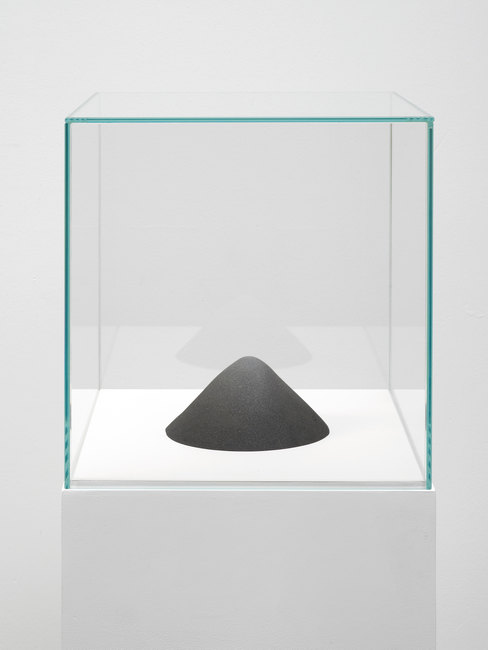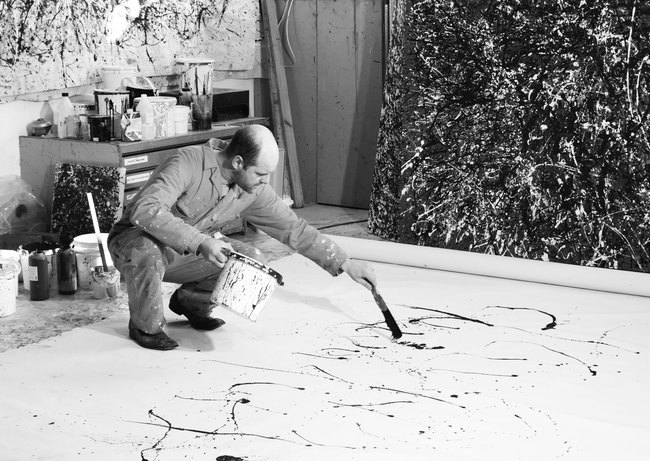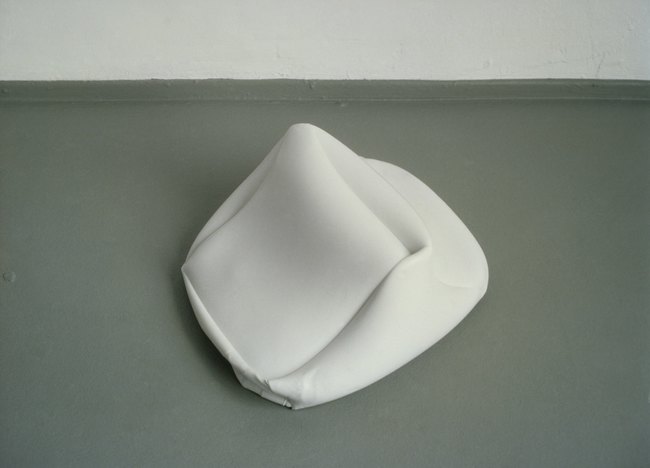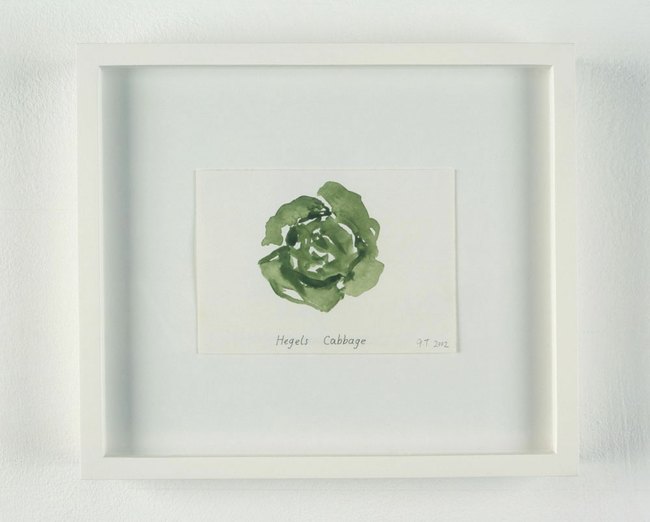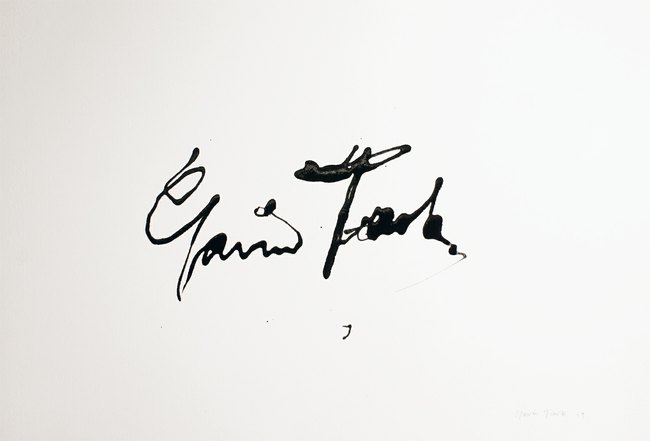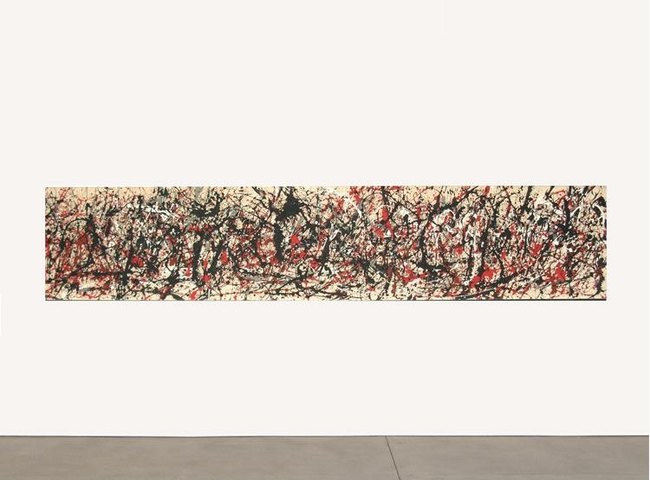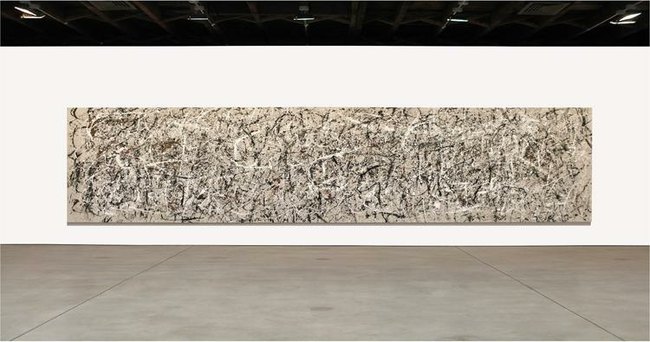AboutEssays2008The End
A recent piece by Gavin Turk is a bronze cast of a pile of ashes from a dead fire called "Pyre," which suggests death but also Christianity's ashes to ashes theme and the eternal life cycle. We all go back to carbon. Hegel thought art had a sell-by date, that its revelatory capacity would be superseded by the higher truths of philosophy -- he thought art was just a stage or phase on the big trip to ultimate meaning. We haven't got there yet. We've only got to the end of a style of capitalism that started up in the 1980s.
Money becomes unreal. But it turns out reality is there after all. Is there an art-world correlate? All we know from developments in the non-art world is that there won't be so much spending. What won't there be so much of in the art-world? Will it be unreality? The unreality of art writing. What do art writers do after all? This weird service they perform, giving their paragraphs to the art-selling industry. Never saying anything undermining or challenging to an audience that has conditioned itself to expect an art critic not to say anything at all anyway.
The art critic is a historically respectable figure but in practice nowadays there's nothing all that important that they actually do. They provide the intellectual gloss for artists' careers. They help galleries promote the products the gallery wants to sell. Now selling is over. One thing ends and rather than another thing beginning we go back to an old thing.
Clement Greenberg is the last art-critical figure who stands for a hierarchical notion of art: the ranking of products and figures, one above or below the other in accordance with history's inevitable ranking: the consensus on quality that culture arrives at over many centuries. This is against the current notion that there are all sorts of art for all sorts of people: for him that was so but you didn't have to take any of it seriously. The best wasn't art that conformed most efficiently to pluralist expectations but art that behaved as if pluralism, a perversion of modernity, didn't exist. Or you could put it differently: modern art that was successful in a way that criticised the buzzing generality of art by continuing standards of greatness set by the past.
The idea wasn't to fall for all the new modern ideas that modernity produced but to use modern means to re-achieve the standards set by art from a pre-modern era, which would necessarily mean ignoring ideas that didn't come from art itself. Where Greenberg's rival, the confusingly similarly named Rosenberg, gave the name "action painting" to artists like Pollock, Rothko and de Kooning, in order to make that art of improvised, agitated, forever changing and melting forms seem to have a consistently moral quality -- and for that quality to be modern, and codified under the heading of "existentialism" -- Greenberg simply took the position that all add-ons were misleading. There was Jackson Pollock in his shed. There were the puddles of paint on the canvas on the floor. It didn't matter what the puddles meant. Meaning is in the form itself: form itself is an idea. And to appreciate the rightness or effectiveness of the idea you had to have eyes to see the form. Did it work or not? Was it a failed form (or combination of forms) or successful? The success or failure was on form's own terms.
The other thing besides extreme anti-relativism that makes Greenberg a remote figure for our times (but since our times are ending we can return to him) is that initially at least he combined reverence for art's purity with left wing politics. When he wrote his first big essays from the late 1930s into the 1940s he was a Trotskyite socialist. Later he dropped being left wing and eventually left wing art critics targeted him as a cultural imperialist. By now he was actually championing target-paintings by Kenneth Noland. His big essays from years earlier had given a shape and a meaning to modernism, connecting it to history, explaining what the problems were, giving experiment a place, trying out different enemy ideologies or enemy tastes ("kitsch" superseded by "middle brow"). And then he moved on and started disparaging his own heroic early essays, saying they were just "high class journalism:" and the only thing was taste, the eye, educating your eye, having taste, exercising taste, looking at art and reflecting on what you saw, responding honestly to what you saw however awkward a social situation you found yourself in as a result.
His enemies saw this state of affairs as: Look look look plus drink drink drink. Leading to out out out. Robert Smithson said Noland was zeros for zeros by a zero. But now it's the end of money. Money is zero. Will there be zero email press releases? People saying "Robert Smithson" to make themselves seem clever? A press release arrives. It's full of Greek words. I email back: those Greek words are just pseudery! A reply comes: No, here's a much longer version, it's really intellectual -- read it if you've got time. As if, if I didn't have time, I'd be shallow (no wonder I'm not a by-word for intellectualism!) I open the attachment and blow me if it isn't even more Greek words! I send another email. I say: It's just amplifying the pseudery: the idea is to get rid of the pseudery. Before that another press release came with some idiotic paintings of pre-modern artworks done in a stupid unreal style. What the hell is this! (I email back.) Plus why am I having to read this utter bullshit in your press release? I go on: It's obvious you don't really think any of these things. Why don't you think of something you actually believe in, or think, or know, or it really happened, and then try and write that? It will sound much more convincing. The reply to that one is that the gallery always works very closely with the artists on all press material. So it's clear the artist is as thick as this gallery director, which was clear anyway from the paintings.
Fuzzy rectangles and puddles of paint by Rothko and Pollock could be made to seem political, because "freedom" and "individualism" were surely anti-communist. Greenberg himself never wrote anything so simplistic about the relationship between artistic freedom and political freedom, but nor did he distance himself from those propaganda efforts; in fact I think he sometimes lent his support. He stopped writing regular reviews in 1951 after a row over Stalinism (he thought one of the publications was too Stalin-sympathetic.) Maybe he did become a bit cultural-imperialist. So what? Well, it would depend what war you were fighting.
There were government sponsored shows in a cold war climate. Greenberg never wrote anything serious that suggested he thought there was such a thing as artistic freedom. Any kind of art had to conform to some kind of widely agreed definition of art. He more or less stopped mentioning politics. That would make anyone politically aware feel comfortable about saying you were a conservative. Adding to his perceived political and cultural conservatism was his championing of a new post-Abstract Expressionist wave of formal artists, the Colour Field painters (his term was "post-painterly abstraction") -- Helen Frankenthaler, Noland, Jules Olitski and Morris Louis among others. They were about new ways of creating pleasure: new formats, new airiness, new heightened or enriched colour effects. But by now there were all sorts of new ways of being an artist, and these ones seemed too much like the Abstract Expressionists only without the big ideas. Which of course is exactly what defines an artist like Noland. Greenberg responded to Noland's concentric circles precisely because they didn’t have a heavy-breathing existential content but merely communicated things like proportion or colour or a breathing surface. He thought the big ideas associated with Abstract Expressionism were primitive and childish (he said "Death is an overrated literary conceit"). It was the art that was sophisticated not the cultish atmosphere.
What was it that made the artists Greenberg supported after the Jackson Pollock generation seem eventually unworthy of support? A mixture of things: their output was too variable, they weren't tragic figures, they didn't self-destruct, they weren't heroic, they were too successful, they produced too much, abstraction itself is a bit boring, and Greenberg seemed to support them automatically or else he gave and withdrew support for twisted psychological reasons. There are aspects of truth in all these myths. Mainly Greenberg had been a figure of authority but after a certain point authority as a theme lost authority -- authority was awarded to rhetorical challenges to authority. As an artist you gained power in this climate if you could establish a rhetorical system of confusion and undermining. Not in relation to the way pictures or sculptures used to have meaning but somehow totally outside that mindset. Going to the altar of history for vindication of your authoritative judgments on good and bad puddles just seemed ridiculous. History wasn't anything anymore, it was just archaeology.
But Greenberg wrote about art from the past in the same way he wrote about the art of his time, from a visual point of view. He didn't ignore social and historical reality but he provided only the kind of background context that he thought was necessary for explaining what he saw. As if context was always infinitely fascinating but only because there's something there in the first place that doesn't rely on context. We can't have that rationale today because we don't ask art to have any independent meanings. We want them to correspond to what we already know.
Greenberg's writing answers a hunger we didn't know we had -- we're conflicted, we don't like to admit how little we ever read in current art criticism that we could honestly say gives us clarity about anything at all. Let alone about experience that is refined, difficult, challenging or abstract. The whole point about art writing now is that it shouldn't make anyone think there's a problem with how art is.
The idea that "colour" could have a meaning, that putting one shade beside another could result eventually in an overall colour vibration that is richer than any single patch, or the vibration caused by two patches together -- that the overall effect could be not only greater but also different to just the sum of a lot of little colour events -- has become completely alien. We expect art only to confirm a situation outside art that is already sewn up and doesn't need art to confirm it. That's why we don’t want anyone writing about it that won't obey the empty rituals. Dust to dust, rhizomes to rhizomes, press releases to press releases. Many people think art is a place of freedom when in fact it's a place of obedience. The freedom in the nutty USA propaganda art shows for hapless Euros shell shocked after the War and hoping there wouldn't be another one, obviously wasn't what Greenberg really meant, but he made a decision to go along with it for a radio broadcast or a little catalogue intro, or whatever it was he actually did. Obedience to high standards isn't exactly obedience though. It's more like critical self-consciousness and recognition of history and precedent in a time when the past's rich visual traditions don't mean anything to most people so they're not thought about. In a situation like that which way do you turn if you don't want to be a loser?
Because of market operations art became popular. Because of the same thing it's about to enter an era of hard times: how will its natural way of being alter? Success and failure as reality rather than game playing -- suppose this were to become urgent instead of gloss and luxury and decadent play, constant unreal experiment to an unreal end?
Modernism is impossible now because it goes with too much social injustice, which postmodernism has been all about reforming. But these reformations have become ritualised and unreal. Modernism as an attack on falsity starts to seem attractive. Greenberg is the big figure of Modernism: he examines it and explains and rationalises it. He's now seen as a conservative figure: partly because he did in fact became less left wing, and partly because he refused to acknowledge the greatness of Pop, minimalism and conceptual art, and went on supporting abstract artists whose output wasn't consistently convincing.
The reason to go on about him now that our art era is ending, and we're about to enter a new era, is because he stands for complexity on the one hand: an idea of a cultural moment and how it relates to the achievements of the past; and ruthless simplicity on the other: the appeal of the visual. Nice or bilious. Whenever there's a period of economic decline political and cultural conservatism seem attractive. But Greenberg is not at all "back to basics." He's back to complexity. It's a particular psychology, a mindset, getting pleasure from things in art being truly surprising if weirdly narrow in terms of what the surprise might mean (since it's merely formal), rather than faux-surprising and comprising a vast range of possible significance, all of it a bit thin and desperate.
Greenberg's collected writings were published in four volumes between the late 1980s and early 90s. It's certainly a voice from the past. When he writes about Miro, who seems a conservative modernist to a contemporary audience conditioned to swoon to relational aesthetic performances on the one hand, and formal art based on ironic relativising of different formal meanings on the other, we don’t have any objections to what he's saying. He more or less says: "Miro creates a breathing surface. His visually witty economy of means is invigorating." It's just that we think it's no different to what Tal R does or Peter Doig or Neo Rauch or Daniel Richter. Modernism used to be grating and odd and now it's a standard consumerist experience. (We're mistaken.)
We don't expect painting to answer to painterly criteria of success of failure and to have a historic sense of its own formal meanings. We expect it to keep adjusting its attempt to appeal to a broader and broader audience by incorporating elements of conceptual art's awareness-heightening project. But this same awareness heightening has become more conservative than modernism. And doing "good" in a pretend, staged way is just being numb and doing nothing. It's the same as the feel-good factor in movies. (I once wrote a one-line song about it. It went: Let's face it Hollywood, everybody feels good by now.) Reactivating the terminated goodness of modernism is far more mind-expanding.
